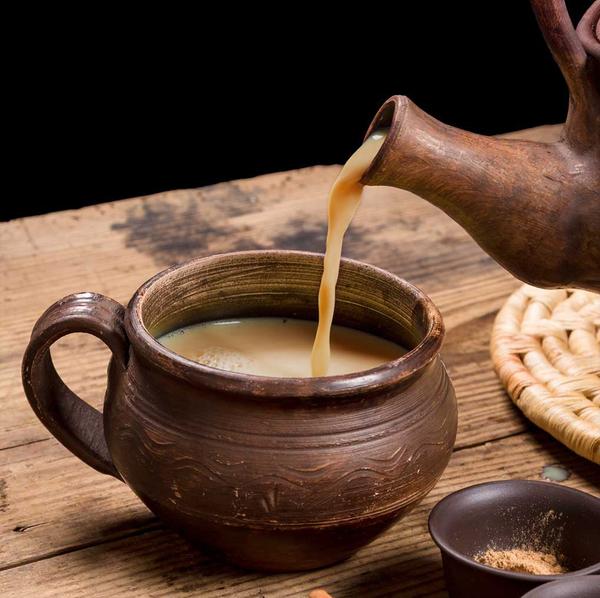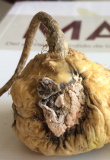Why you shouldn’t eat raw maca
For the people of Junin in Peru maca has been used as a medicinal remedy to prevent and treat health conditions for over 2000 years. Traditionally it is used for it’s ability to balance hormones, mental health, reduce stress and adrenal fatigue as well as promoting vitality, focus, concentration, fertility and sexual function. If you ask any of the Incan descendants how to prepare maca they all answer the same way “It must be cooked or boiled to extract the medicine”. So why in our western culture are we suddenly changing 2000 years of tradition and deciding to consume raw maca powder?
How is maca traditionally consumed?
Used for centuries in Peru the health benefits of maca root are well documented and include everything from energy, vitality, stamina, endurance to hormonal balance, sexual function and mental health. Maca is a root vegetable that is 70% carbohydrate, with a high starch content (similar to a potato). As such, it has been traditionally cooked in ways similar to that of potatoes or starchy foods. The whole fresh bulb or dried bulb is either boiled in a soup or grated into fine pieces and boiled as a tea or porridge.
Stories say that the Inca would boil and consume up to 200g of maca per day via these traditional methods, with the local people claiming that sites like Machu Picchu were built with the power of maca. In more recent times maca has been ground into powders (fresh and dried) to increase surface area and allow easier inclusion into various meals. The ground powder is a favourite additive to Inca Tea (boiled cinnamon, cloves, dried fruit and maca in water), one of the most popular way to drink maca in Junin. For those from the region who want to eat their maca straight in milk they use pre-baked or heat-activated maca powder.
What is gelatinized maca (activated maca)
This is the biggest misunderstanding when it comes to maca, gelatinized maca is often confused with gelatin due to the similar spellings of the words. Gelatinized maca does not contain gelatin or ave any association to gelatin, gelatinizing is actually just a name for the process of heating a starchy product to reduce starch content, making it more viscous. Don’t worry gelatinized maca is 100% vegan and vegetarian friendly. Gelatinized maca is simply raw maca that has been put through a short (<10 sec) high pressure steam to sanitise, kill nasties like bacteria and mould and also make it far better for your gut and digestion. More recently gelatinized maca has been called “activated maca” as it has been heat-activated and it prevents confusion for vegans and vegetarians who are scared by the word gelatinized.
Gelatinized maca vs Raw Maca
Raw maca is like a sponge for mould and the longer it sits in humid conditions the more mould it attracts. The problem with the type of mould that loves maca is that it produces highly toxic chemicals called aflatoxins. Aflatoxins are carcinogenic (cancer causing) and can have a serious long-term negative health effect on your body and gut bacteria, even in tiny doses. The only way to kill this mould and protect from the formation of toxins is by cooking maca to sanitise it, as the Inca have done for centuries. The safest form of maca to have is commercially called gelatinized maca or activated maca, which has gone through a high pressure steam to kill the mould and sanitise it. In addition gelatinized maca has a more sweet, caramel flavour and tastes much better than earthy raw maca. So when it comes to gelatinized maca vs raw maca, gelatinized maca has some clear benefits.
Mold growing on raw maca produces cancer causing aflatoxins, which is why it must be cooked
But doesn’t cooking maca destroy the nutrients?
Actually no it doesn’t, this is the most common mis-conception about maca and a lack of understanding of maca biochemistry and it’s medicinal mode of action. Almost all clinical studies demonstrating positive health benefits of maca have been performed with maca prepared in it’s traditional manner (boiling or heating in water) or with heat activated or extracted maca. From this it is evident that the active medicinal components are not denatured with heat and new studies suggest that the heating is actually necessary for production of the various health enhancing metabolites. Dr Gustavo F. Gonzales who heads the Department of Biological and Physiological Sciences and High Altitude Research at the Universidad Peruana Cayetano Heredia stated in his comprehensive biochemical review of maca:
Most people in our western culture will eat maca powder in a raw smoothie or in raw food.
In Junin, Peru maca has traditionally been cooked or heated for the medicinal benefits.
Why maca should be cooked
To understand this you must understand the reason we consume maca. Maca is a medicine, it is a medicine for prevention of disease and for treatment to bring balance to our endocrine system. The main bioactives inside maca that give this physiological response are unique to this plant and are called macamides. There are 17 known macamides and each of them work directly with your endocannabinoid and endocrine system to produce the positive health benefits of maca for your body.
Their biosynthesis occurs from breakdown of the heat sensitive glucosinolates (1) in the fresh maca bulb (Scheme 1). During initial drying of maca post-harvest there is hydrolytic processing of lipids and glucosinolates and a subsequent release of significant amounts of free unsaturated fatty acids (9, 10) and a key biochemical called benzylamine (7). Both of these compounds are precursors of, and whose accumulation correlates well with, the synthesis of bioactive macamides (11, 12, 13). What is now known is that the coupling of fatty acids with the benzylamine intermediate 7, is a thermodynamic process (ie. it requires heat).
Scheme 1. Showing the breakdown of heat sensitive glucosinolates to the formation of bioactive macamides.
What is wrong with eating raw maca vs gelatinized maca (activated maca)?
- Raw maca accumulates mould that produces toxic aflatoxins. Aflatoxins are cancer causing molecules that attack our gut biome and can remain in the raw powder of maca unless it is cooked. Eating raw maca is risky and can cause serious harm to your health and upset your gut biome (Read about examples of this here). In essence it can do more harm than good.
- Raw maca root contains high levels of starch (amylose and amylopectin). Starch can often be hard to digest if eaten raw and may give some people symptoms such as bloating, gas, distention and abdominal discomfort.
- Maca has always been traditionally cooked or heated and studies show that the health benefits of maca powder are not diminished by these processes, if anything they are enhanced. The active components responsible for most of the medicinal benefits of Maca (FAAH inhibitors, FFA’s and other metabolites) are heat activated. So if you are eating raw maca you may not be getting the health benefits you desire.
- Our own analysis demonstrated that a commercially available sample of raw maca in New Zealand had 2x higher bacterial concentrations and 8x higher mould concentrations compared to our activated (pre-cooked) sample. Raw maca is a health risk that does not need to be taken.
- The texture and flavour of activated (pre-cooked) maca powder is more sweet, caramel and palatable. Raw maca has a more tart taste and often forms grainy starch sediments in solution when its not cooked, creating an unpleasant texture and flavour. If you want maca for your smoothies activated maca has it all and a much nicer taste.
So what is the solution – gelatinized maca vs raw maca?
Simply put it is best to buy activated maca or gelatinized maca as it is safe, potent and tastes better. It does not need cooking but can be cooked more if required. This follows the tradition and the science and the way it has been done for 2000 years – cooked.
(NB. Gelatinized maca does not contain gelatin, gelatinizing is the process of heating to remove starch – 100% vegan friendly)
We only sell activated maca (pre-cooked) as it is higher in potency, easy on the stomach, ready to eat, more versatile and tastes much better. You can put it straight in a smoothie or cook it. See our product range of activated maca here.
Note: There is no upper limit with maca and everybody is different, so it is important to find your ideal dose that is right for your body, for some this may be less than the recommended for others it may be more. If you experience positive health benefits then we suggest you continue treatment at that ideal dosage. The material provided on this website is for information purposes only. It is not intended to replace medical advice or be a treatment for any medical condition. Users should consult a health professional if you have any concerns about your health, are starting any health or nutritional related treatment, or for any questions you may have regarding your own or any other party’s medical condition. Information and statements regarding dietary supplements have not been evaluated by the Food and Drug Administration and are not intended to diagnose, treat, cure, or prevent any disease.
Leave a Reply
Want to join the discussion?Feel free to contribute!











Thanks. This was helful..
Very thorough explanation. Thank you.
Is beetroot called a maca root? or this is two different types of root
No they are different plants. Maca is unique to Peru.
What can I do if I’ve been eating raw maca??
Swap to an activated powder. Click here to see what maca is best for the condition you are looking to treat: https://themacaexperts.com/maca/treating-with-maca/
For how long should you boil raw Maca?
Thank you for the great tips.
The issue is more about how maca is exported as once there is a risk for aflatoxins then boiling is pointless as it won’t destroy them. Our blog is to push for all maca to be exported heat-treated, pre-cooked or gelatinised for the safety of consumers. Without 100% traceability back to origin there is no way to ensure the safety and very few companies test for mould abd aflatoxins or mycotoxins. So we believe that unless you are buying maca in Junin where it is grown and stored correctly then it is safer to not eat the raw form of the root.
Will baking the yellow maca powder before use have the same effect as boiling the powder? I tried using it raw the first time I used it and it caused me bloating and cramps,then I started boiling it and I nolonger have any of that.I have been taking it 5days in and 2days out for 3 weeks now and its making me emotional,more like a feeling of wanting to cry,not sure if baking it once off and storing it and then boiling it before use would help because its helping with my cystic acne and I dont want to stop taking it
Before using any maca powder we highly recommend you go through the checklist of what to know before you buy here: https://themacaexperts.com/maca/learn-about-maca/five-questions-you-should-ask-before-buying-any-maca-powder/
Its not just about raw vs gelatinized it is also about traceability, sustainable sourcing, macamide analysis and standardising, colour selection for the condition being treated, testing for heavy metals and aflatoxins and much more.
Help. I’ve eaten raw red maca and my gut biome is messed up. I stopped eating it 2 weeks ago and am still having problems. Should I toast what I have and start eating it again? Use acidophilus? Both? I’ll buy gelatinized in the future, but I need to figure out what to do as soon as possible. It’s getting worse and I’m moving long distance soon. Can you suggest anything?
It may be worth beginning on a gut healing and probiotic plan. Contact info@joshboughton.com to get advice on a customised plan to help rebuild your gut flora. Are you based in the US? We would advise buying from http://www.themacaexperts.com activated maca in the future. We also do concentrated maca extracts that are much safer and better on the gut if the activated powder is still too tough to take.
I’m convinced but still have about 2 lbs of raw Maca that I bought on sale and can’t return. Can it be cooked, boiled before using or is it best to discard and start on gelatinized and call it a loss?
Hi lyn without traceability and testing for aflatoxins it is best not to use it. Aflatoxins are not heat destroyed and are very nasty on the body. This is why buying quality maca from a reputable and traceable source is important. We test for mould and aflatoxins pre and post gelatinizing to ensure the maca is safe for consumption else it could even make your health worse long-term.
Unfortunately, aflatoxin is heat stable to 160ºC, well above the steaming temperature. Steaming may kill the mold, but the toxin metabolite of the mold will remain. The best bet is to buy maca from a source that doesn’t sell or process moldy products.
100% agree, that is why we only sell activated maca (heat-treated) that is 100% traceable and also tested for aflatoxins once processed to ensure safety for customers.
I happen to live in Huancayo. I gather then that the standard powder sold in local farmers markets should be heated? Would the heat from, say, a coffee activate it?